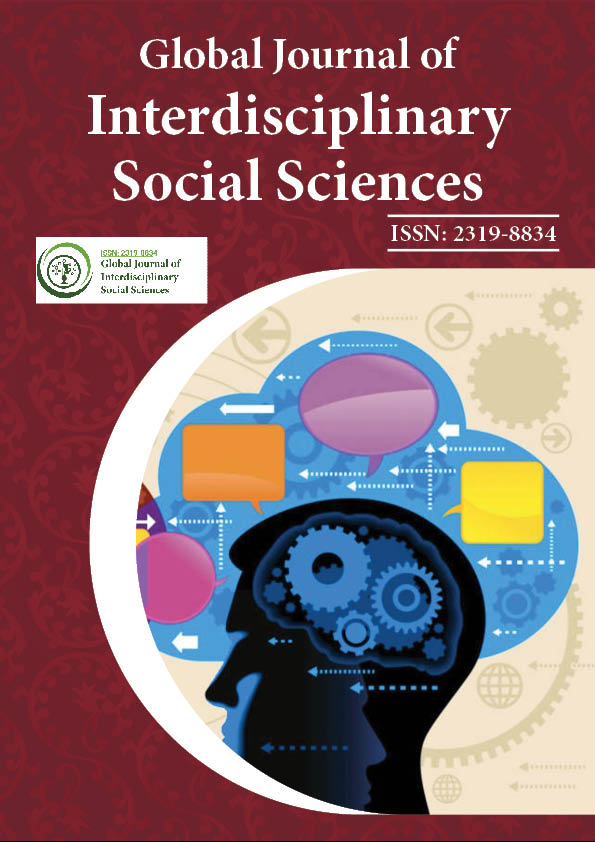Indexed In
- JournalTOCs
- Google Scholar
Useful Links
Share This Page
Journal Flyer

Open Access Journals
- Agri and Aquaculture
- Biochemistry
- Bioinformatics & Systems Biology
- Business & Management
- Chemistry
- Clinical Sciences
- Engineering
- Food & Nutrition
- General Science
- Genetics & Molecular Biology
- Immunology & Microbiology
- Medical Sciences
- Neuroscience & Psychology
- Nursing & Health Care
- Pharmaceutical Sciences
Perspective - (2023) Volume 12, Issue 1
Signs and Symptoms of Post-Traumatic Stress in Children and Adults
Debbi Gibbon*Received: 01-Mar-2023, Manuscript No. GJISS-23-20290; Editor assigned: 06-Mar-2023, Pre QC No. GJISS-23-20290(PQ); Reviewed: 20-Mar-2023, QC No. GJISS-23-20290; Revised: 27-Mar-2023, Manuscript No. GJISS-23-20290(R); Published: 03-Apr-2023, DOI: 10.35248/2319-8834.23.12.042
Description
Since 2013, post-traumatic stress disorder in children under the age of six has been officially acknowledged; nonetheless, there is still a dearth of research on this age range. Finding out whether the symptomology evaluations, social supports, and treatments that are available for older children can be used to those who are younger than six suffering from the disorder is a crucial first step in aiding these youngest post-traumatic stress disorder patients. The study on post-traumatic stress disorders in children aged six to seventeen in Western Educated Industrialized Rich Democratic (WEIRD) countries is compiled in this extensive literature review. Definitions, diagnostic standards, posttraumatic stress disorder symptoms, causes of PTSD, risk factors for developing PTSD, the value of social support, and treatment methods are all discussed in this analysis. There are several recurring themes and gaps in the literature that have been identified, such as the overemphasis on sexual abuse as the root of childhood PTSD (while ignoring physical abuse and maltreatment), the disproportionate reporting and diagnosis of females, and the paucity of studies directly comparing the causes, symptoms, and treatments of PTSD in children under the age of six. The results of this investigation point to the need for additional study on the causes of PTSD, preventative measures, diagnosing symptoms, and efficient therapies for kids under the age of six.
An individual can experience post-traumatic stress disorder at any age. The most recent update to DSM-V demonstrates that PTD can manifest in children as young as six years old (DSM-5 Criteria for PTSD, 2019). Although though the Diagnostic and Statistical Manual has only officially acknowledged posttraumatic stress disorder in youngsters (under the age of seventeen) since 2013, the subject is becoming more common in society and in academic studies (DSM History, 2019). In fact, the National Comorbidity Survey Replication found that "5% of (those) teenagers met criteria for PTSD and increased with age" in a study involving 10,000 adolescents.
Temperament is a popular concept in research on young children's psychopathology risk. The characteristic that accounts for individual variability in responses to situational and environmental stimuli is known as temperament. Although there is no universal agreement on how to define temperament, Buss, Plomin, Rothbart, Thomas, Chess, Hinde, and McCall's major views were summarised by Goldsmith and colleagues (1981) in an attempt to describe temperament. A synthesis of important theories was produced by combining the work of these researchers. "Temperament consists of generally consistent, basic tendencies inherent in the person that underlie and modify the display of activity, reactivity, emotionality, and sociability," McCall (1981) stated in his analysis.
According to Rapee's 2002 review of earlier research, temperamental responses in people tend to be rather consistent in nature and intensity across contexts. In older populations, temperament is used instead of personality to describe this "individual-difference" element (Prior, 1992). Although the extent of genetic effect on temperament is hotly contested, only 30% to 50% of the variance in temperament or personality has been linked to genetic variables.
All of the signs and symptoms of adult post-traumatic stress disorder seem to be expressed in children. But not everyone who encounters a trauma will display their post-traumatic stress disorder symptoms in the same way. "Trauma is perceived through all five senses and trauma is perceived as an intense fear," according to DeBellis and Thomas' 2003 research.
Dysregulation of their physiologic response systems is a symptom of post-traumatic stress disorder in children who have experienced traumatic events.
Citation: Gibbon D (2023) Signs and Symptoms of Post-Traumatic Stress in Children and Adults. Global J Interdiscipl Soc Sci.12:042.
Copyright: © 2023 Gibbon D.This is an open-access article distributed under the terms of the Creative Commons Attribution License, which permits unrestricted use, distribution, and reproduction in any medium, provided the original author and source are credited.
